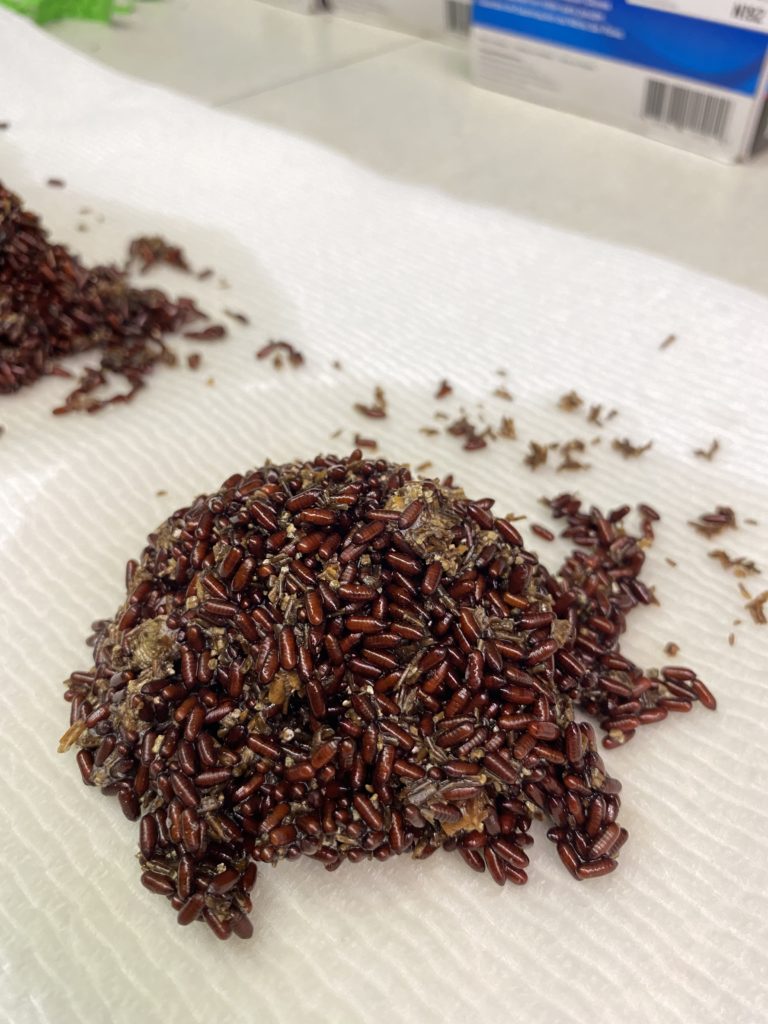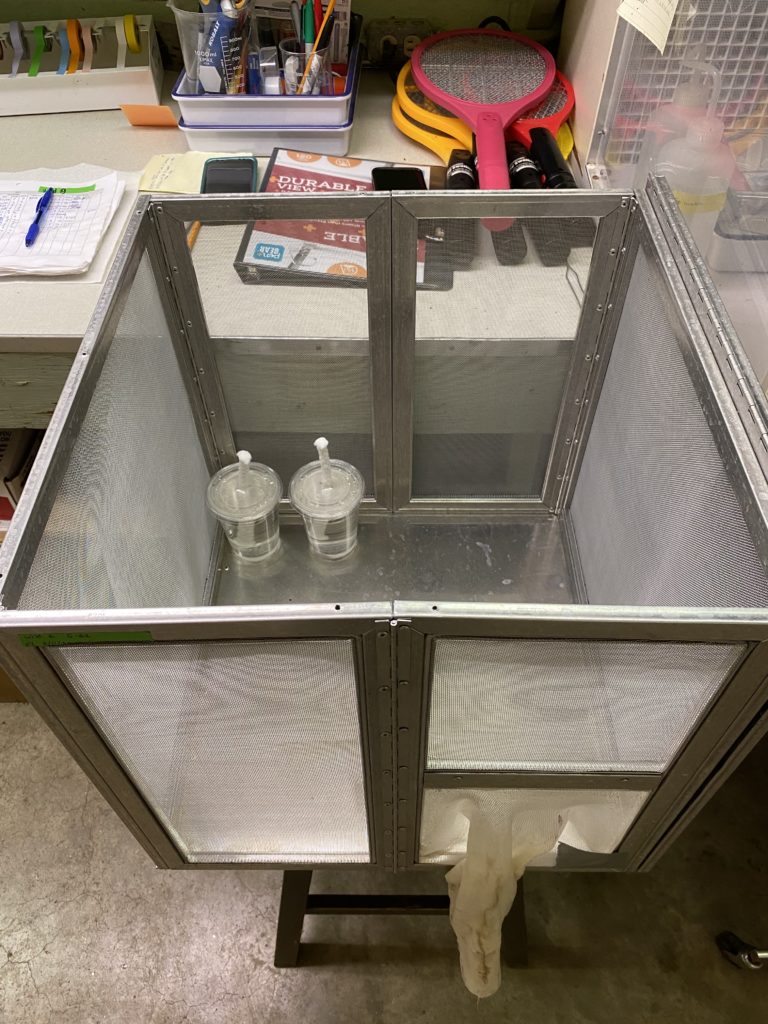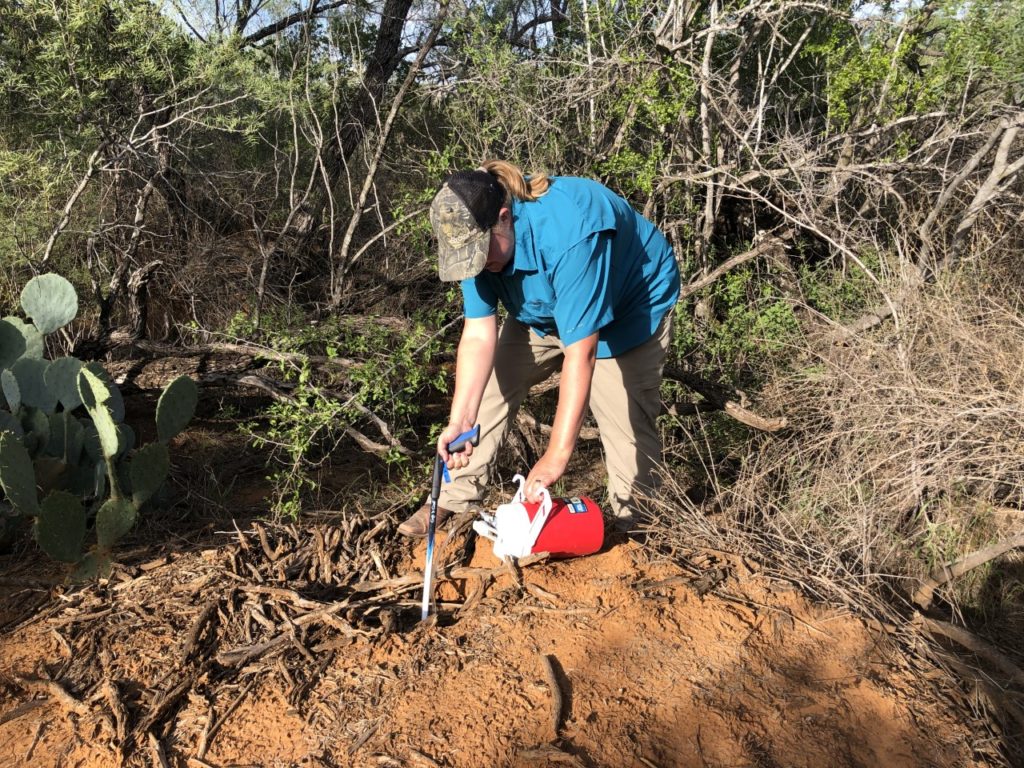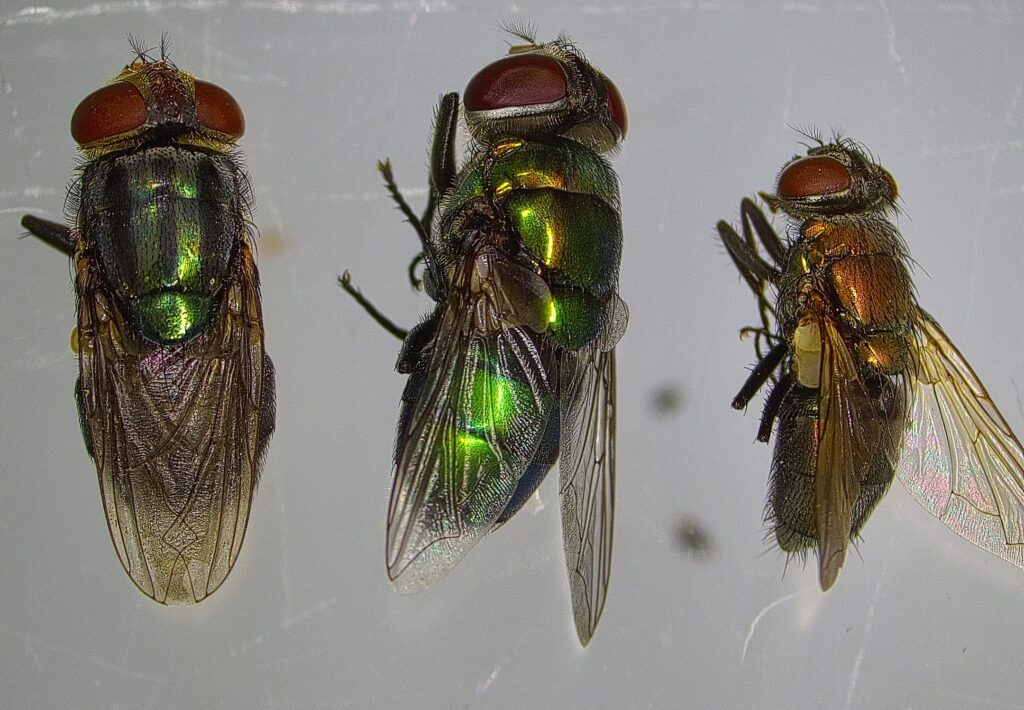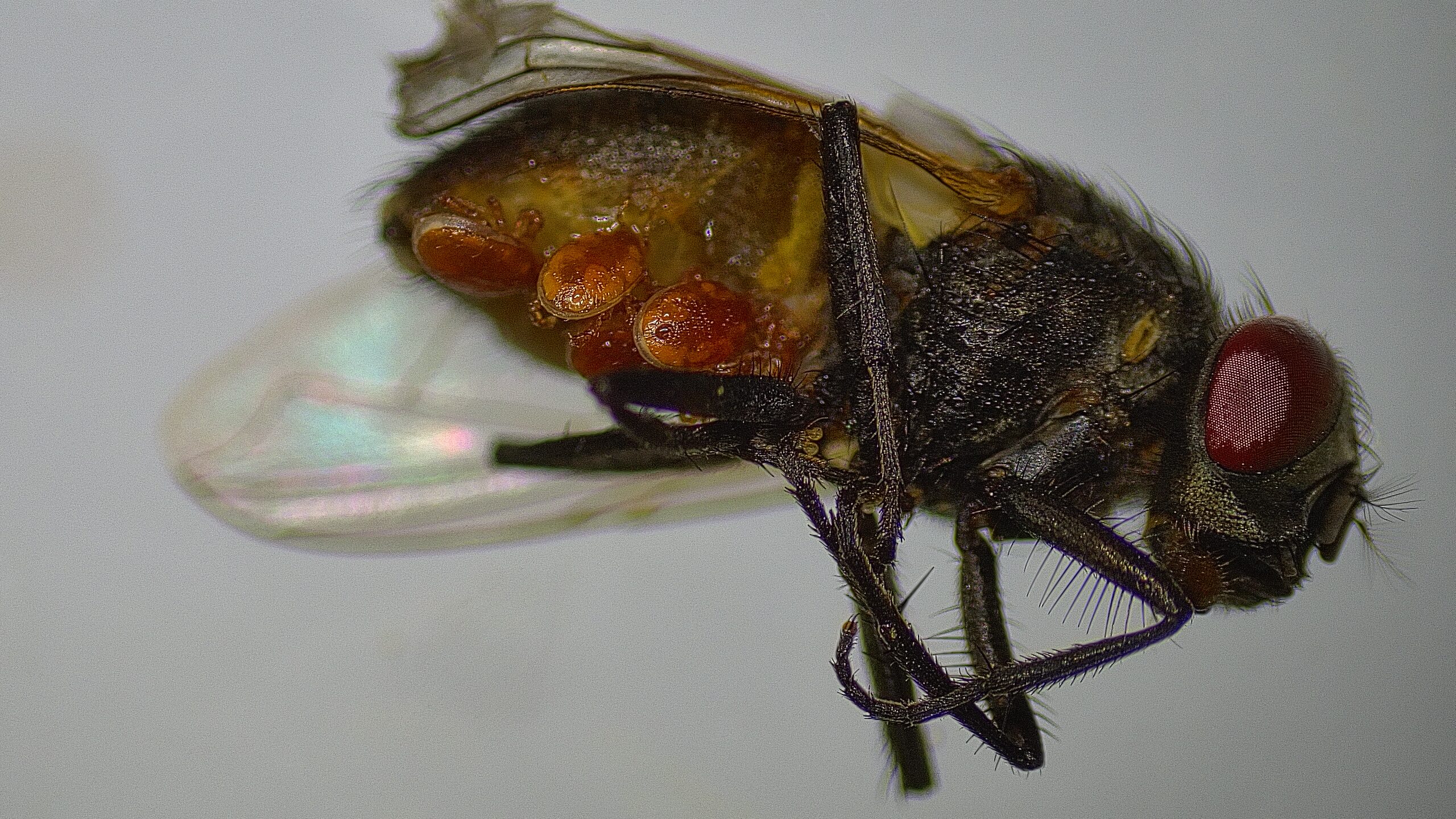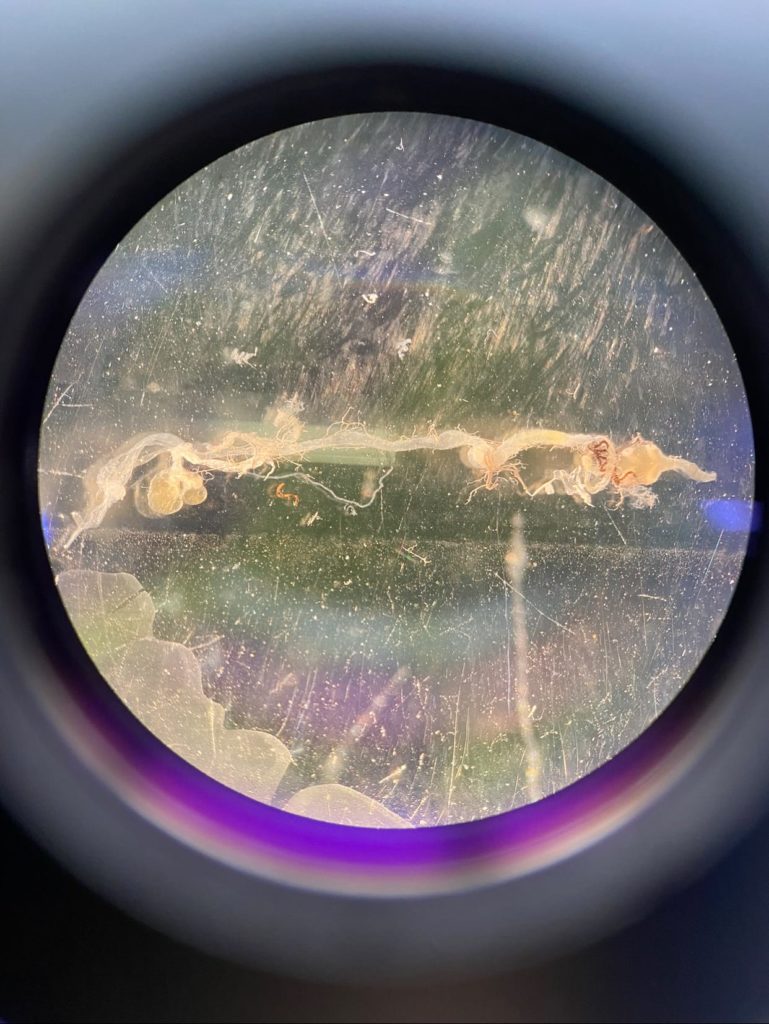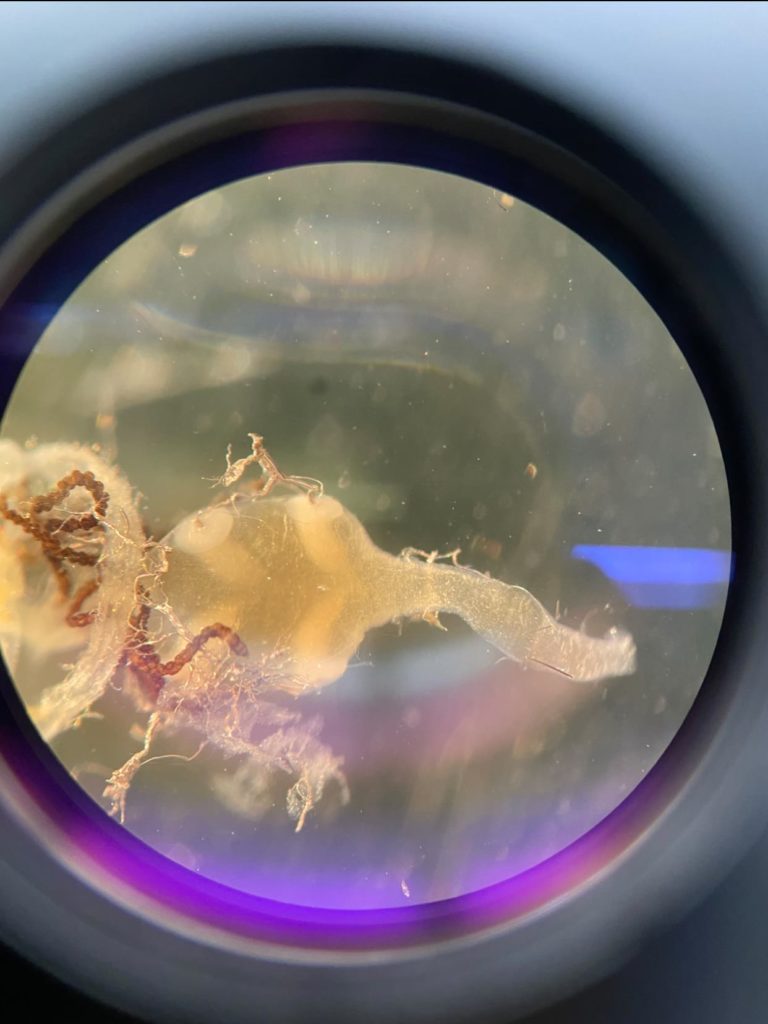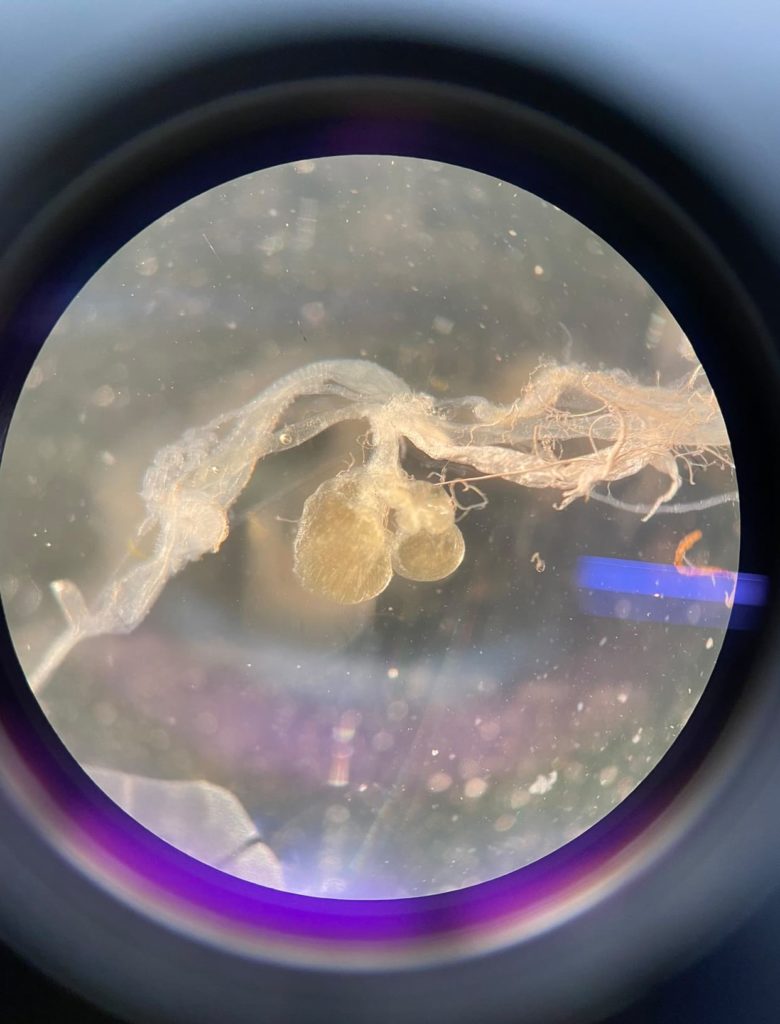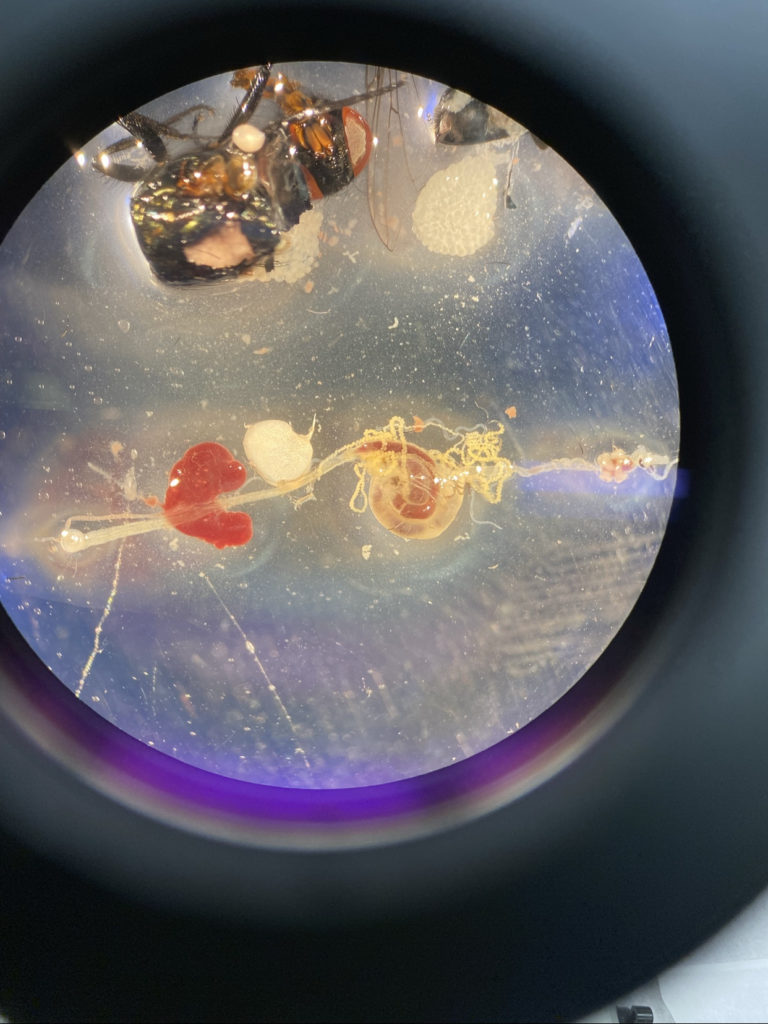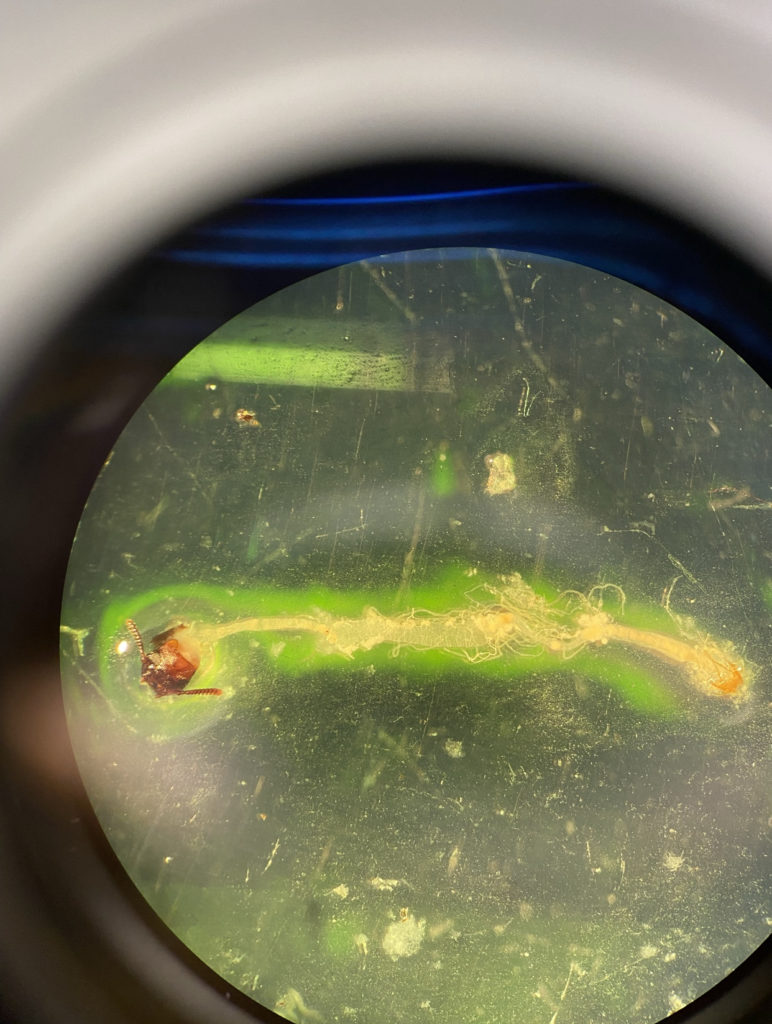What We Do
The stable fly, Stomoxys calcitrans, is a species of fly in the family Muscidae. Stable flies are blood feeding insects which use their long mouthparts to pierce the skin of their host and take a blood meal. They are a serious pest of livestock, particularly cattle and horses. These flies can cause discomfort to animals while feeding and are known to be vectors of disease.
The Kaufman Laboratory maintains six separate colonies of stable flies. These vary in original collection location and insecticide resistance status. All six colonies were established in Florida and were shipped to Texas A&M University in 2020 shortly after Dr. Kaufman’s arrival as the head of the Entomology Department. These flies have been maintained in lab for generations, most for well over a decade. There is also an ongoing effort to establish a local colony of Texas stable flies.
Our stable flies need daily care, which requires a thorough knowledge of their developmental stages, food and oviposition preferences. The colonies are managed by our Ph.D. student Lauren Beebe, and are also maintained by our research assistant Isaac Perez, research worker Travis Anderson, and undergraduates, Megan Bindseil, Audrey Redning, Kierra Kennedy, Fayth Rojas and Macy Strain.
